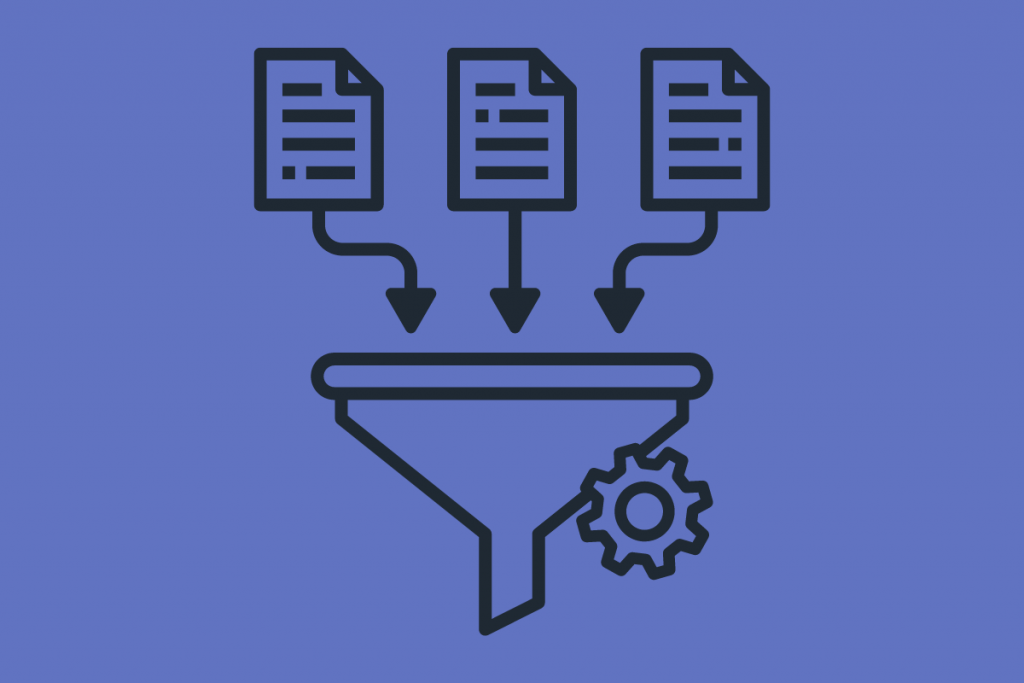Drive Results With B2B Blogging: The Ultimate Guide for SaaS
When done right, B2B blogging can help you attract, convert, and retain customers—cheaper than other marketing methods.
Is your blog failing to drive sales for your SaaS business? Then you’re in the right place.
In this guide, you’ll learn how to drive results with your B2B blog by creating a killer blogging strategy and high-performing blog posts.
Let’s go!
Contents:
- Why Should SaaS Companies Bother with B2B Blogging?
- Common B2B Blogging Mistakes: Why You Might be Failing
- How to Create a Killer B2B Blog Strategy for SaaS
- 3 Keys to Write a High-Performing B2B Blog Post
- Key Takeaways on How to Succeed With B2B Blogging
Why Should SaaS Companies Bother with B2B Blogging?
A B2B blog is a must to succeed with your SaaS content marketing strategy. It’s a perfect platform to share your expertise through content like white papers, blog posts, and case studies.
Blogging helps SaaS companies educate their audience about the benefits of their products. Detailed blog posts can clarify complex features, showcase use-case scenarios, and offer insights into how the software solves specific problems.
Additionally, a well-maintained B2B blog is a valuable resource for existing customers.
It can offer tips, tutorials, and best practices, improving the customer experience and building loyalty. By addressing common questions and challenges through blog posts, SaaS companies can reduce the burden on their customer support teams and provide ongoing value to their users.
How a B2B Blog Can Help Your Business Grow
Drives visitors to your website
A B2B blog will drive visitors (aka prospects) to your website—if you create content on topics relevant to your target audience and implement keywords they’re actively searching for.
Helps you convert those visitors into leads
Your blog visitors are potential leads, and you can convert them by including a call to action (CTA) in your content. For example, your CTA might encourage readers to sign up for your newsletter or offer them a white paper in exchange for their contact information.
4 More B2B Blogging Pros to Win You Over
Search engine optimization
Regularly publishing high-quality blog content can increase your website’s ranking and attract more organic visitors. This approach is often more cost-effective than paying for ads because it builds long-term value and credibility, driving sustained traffic without ongoing costs.
Authority building
Having a B2B blog allows you to deliver engaging content to your target audience and position your company as an industry authority.
Most of us are more likely to buy a product or service from someone we have a relationship with, ideally someone who has taken the time to educate us by offering free (impartial) content.
Companies that build relationships with potential customers through blogs are more likely to make sales. In fact, 52% of B2B customers say they are more likely to buy from a company after consuming their content.
Brand awareness
Your blog is the perfect platform for building brand awareness and sharing important company updates. You can highlight success stories from satisfied customers, exciting additions to your client base, the latest product updates, and introductions of new team members.
Share your blog posts on social media or repurpose them into social media posts to reach a broader audience.
Cost-effectiveness
Your B2B blog works all day, every day.
This means it keeps bringing in visitors and potential customers even when you’re not working. Creating B2B content is a smart long-term investment because it can continue to attract readers even months and years after it’s been published.
This is why a blog is one of the most cost-effective ways to market to other businesses. The more blog content you have, the more visitors, leads, and customers you’re likely to get.
Common B2B Blogging Mistakes: Why You Might be Failing
B2B blogging can be an effective tool for driving traffic, converting leads, and establishing authority in the SaaS industry. However, many businesses struggle to see the desired results from their blogging efforts. Here are some common B2B blogging mistakes that could be causing your blog to fail:
Prioritizing keywords over customer pain points
Focusing too heavily on keywords while neglecting customer pain points can make your content feel forced and irrelevant. While SEO is important, your primary goal should be to address the needs and challenges of your audience.
When you prioritize solving problems and providing valuable insights, your content will naturally attract more readers and perform better in search engines. Keywords should improve your content, not dictate it.
Not having a content strategy
One of the biggest mistakes is not having a clear strategy in place. Without a well-defined plan, your blog can quickly become a collection of random posts with no cohesive theme or purpose. Develop a content strategy that aligns with your business goals, target audience, and marketing objectives.
Not understanding your audience
Failing to understand your audience’s needs, pain points, and preferences can result in content that misses the mark. Invest time in creating detailed buyer personas and conducting audience research. Tailor your content to address their specific challenges and provide valuable insights that resonate with them.
Inconsistent posting schedule
Inconsistency in publishing can hurt your blog’s performance. Posting irregularly or infrequently can cause your audience to lose interest and trust in your blog. Establish a regular posting schedule and stick to it. Consistency helps build momentum, keeps your audience engaged, and improves SEO.
Overly promotional content
While it’s important to promote your products or services, overly promotional content can turn readers off. Your blog should primarily focus on providing value to your audience through educational, informative, and insightful content. Strike a balance between promotional and non-promotional content to keep your readers engaged and interested.
Lack of engagement and promotion
Creating great content is only half the battle; you also need to actively promote it. Share your blog posts on social media, in email newsletters, and through other marketing channels. Engage with your audience by responding to comments and participating in discussions.
This not only increases visibility but also fosters a sense of community around your blog.
How to Create a Killer B2B Blog Strategy for SaaS
- Define your goals.
- Get to know your target audience.
- Create a distribution plan.
- Create a content calendar.
- Follow up and optimize.
1. Set Goals
Before you start creating blog content, you need to set goals—this will help you monitor and improve the performance of your strategy over time.
Your goals could be to increase conversions, organic traffic, or brand awareness, to name a few.
The goals you set will influence the content creation. If your goal is to increase organic traffic, keyword research and SEO optimization will be required. If your goal is to increase conversion rates, it will require some form of CTA, and so on. Remember to define KPIs for each goal so you can easily follow up on performance.
2. Identify Your Target Audience
How well do you know your target audience and their pain points? You need to know who you are creating the content for. Conduct a target audience analysis if you haven’t already done so. It can also be helpful to develop buyer personas.
A blog post should be informative, insightful, and relevant to potential customers. So, it’s important to identify the challenges, needs, and questions your target audience has.
You also need to be aware of the different stages of the customer journey. Are you creating content for the awareness, consideration, or decision stage?
3. Plan Distribution
How you should distribute the content varies depending on your goal. For example, if your goal is increased organic traffic, Google will eventually handle the distribution.
It’s good to use different channels and platforms for content distribution to learn which ones work best to reach your target audience.
Examples of channels and platforms for distribution:
- Google Ads
- Email marketing
4. Create a Content Calendar
Creating a content calendar helps maintain a consistent and organized blogging strategy. The content calendar should cover topics, responsibilities, publishing dates, and frequency.
Picking customer-centric topics
Start brainstorming ideas that align with your audience’s interests and pain points. You can gather inspiration from various sources, like keyword research tools, competitor analysis, and feedback from your audience. It’s important to choose topics that not only resonate with your target audience but also address their needs and questions.
Assign responsibilities
Decide who will be responsible for each aspect of the content creation process. This includes assigning tasks to writers, designers, and editors. Clearly stating who does what makes sure everyone knows what to do and helps avoid any confusion or delays.
Deciding on publishing dates and frequency
Establish a realistic schedule that allows enough time for content creation, editing, and approval. Consider the best times to publish your content to maximize engagement and reach. Consistency is key, so determine how often you can realistically publish new content, whether it’s daily, weekly, or monthly. Make sure to spread out your content to avoid overwhelming your audience and to keep them engaged over time.
5. Analyze and Optimize
Develop a process for following up and improving your B2B blog to make sure it continues to deliver value and drive results.
Tools you can use to analyze content performance:
3 Must-Knows for a High-Performing B2B Blog Post
A B2B blog post should engage your audience, provide valuable content, and establish authority in your industry. Here are three essential keys to producing content that stands out and delivers results:
1. Use clear language
It’s okay and even preferable to use everyday language when writing for a B2B audience. Be clear and avoid jargon that could alienate or confuse your readers. Get to the point fast, and don’t add extra fluff just to fill out the content.
Your goal is to make the information accessible and easily digestible. This not only helps in keeping your audience engaged but also builds trust, as clear communication often correlates with transparency and reliability.
2. Share expert knowledge and experience
Research is an important part of the content creation process, so don’t rush through it. Get acquainted with the topic by diving into in-depth industry reports, studies, and white papers.
The best way to tackle complex topics is by interviewing an expert. Often, there is someone within the company who has the industry-specific knowledge your content needs. It’s not always necessary to interview an expert, but in most cases, it can add a lot to the text.
3. Back up your insights with statistics
Backing up your insights with statistics not only adds weight to your arguments but also improves your post’s trustworthiness. Conduct your own studies and surveys, or refer to reputable sources. Incorporating data into your blog post can make your content more persuasive and compelling.
Whether you’re highlighting industry trends, proving the efficacy of a strategy, or building trust through a case study, data provides the concrete evidence needed to support your claims. Just make sure the statistics are relevant, up-to-date, and accurately presented to maintain your credibility.
Key Takeaways on How to Succeed With B2B Blogging
In conclusion, a blog is a valuable resource for all B2B content marketers. It helps increase lead generation, organic traffic, conversion rates, and authority. By delivering relevant content, companies can build strong relationships with both existing and potential customers.
If you don’t have a B2B blog yet, or if you have one but aren’t publishing regularly, now is the perfect time to get started. Make blogging a part of your content marketing strategy today.
If you want to regularly update your B2B blog but don’t have time to create content, message me, and I’ll solve it for you.








